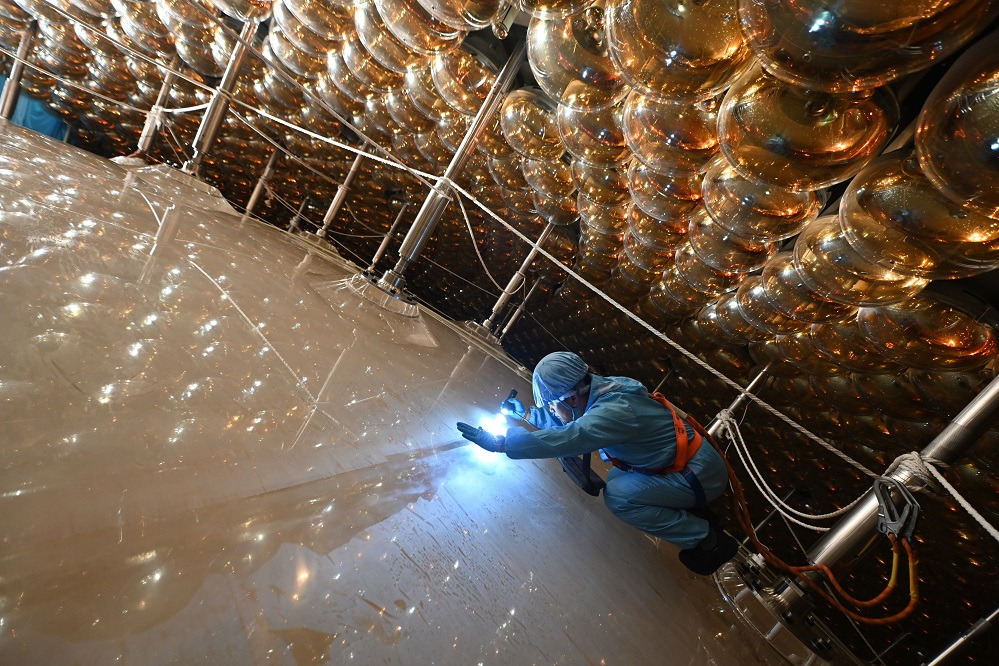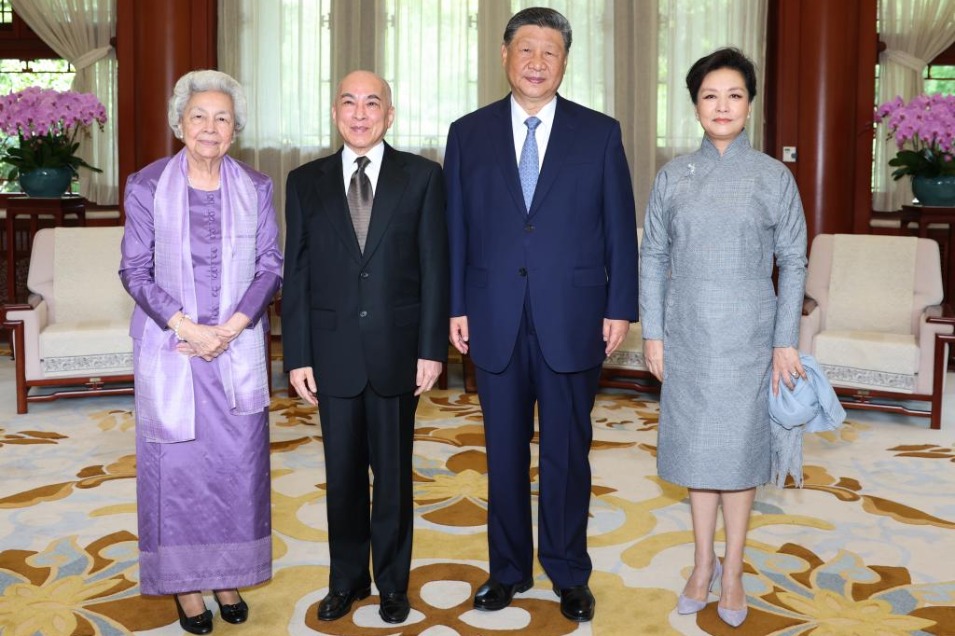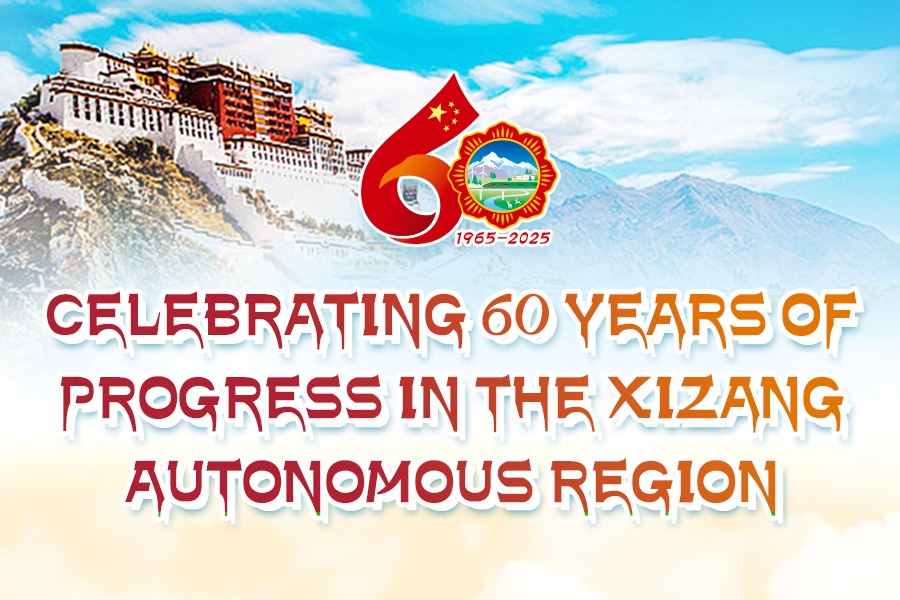'New Chinese style' enriches brands, goods, life
Fashion, furniture, architecture, lifestyle, home decor ... all gaining from increasing use of cultural elements

On Xiaohongshu, a lifestyle-focused social media platform in China, a search for "new Chinese style" could produce over 4 million results, mostly user posts. That number assumes remarkable significance when you find out it is double the number of results for a similar search for European and US styles that were the rage in China once upon a time.
For the younger generation, at a time when traditional culture is becoming popular, "new Chinese style" is akin to a national badge — worthy of being discovered, worn proudly, taken seriously, encouraged and patronized.
Be it fashion, home furniture, architecture, coffee, tea or weddings, every conceivable field is now being enriched by "Chinese style" — a reflection of growing confidence in local culture and its potential to infuse vitality into anything in a way that can be monetized.
"The origin of the 'new Chinese style' is the younger generation's fascination and love for traditional culture. Because of young people's unique understanding and bold imagination of Chinese culture, 'China-Chic' is now a trend that has gone global. The new wave of Oriental aesthetics is sweeping the world," said Hua Hui, associate professor of the School of Media & Communication at Shanghai Jiao Tong University.
Fashion signs
Fashion is always a major indicator of popular trends. China-Chic has been selected as one of the Top 10 lifestyle trends for 2022 in a compilation released by Xiaohongshu. According to 2022 Spring/Summer Women's Clothing Industry Trends, a trade report co-published by Alibaba's online marketing technology platform Alimama and Taobao, Alibaba's online marketplace, last year, the new Chinese style has emerged as one of the eight major trends.
It is a trend that is breathing new life into local brands and talented designers such as Yang Yingying. She rose to be an icon for the post-1980s generation after establishing new Chinese style brand Tuyue in 2008.
"Before 2019, the 'new Chinese style' was not a style label but just an idea that couldn't be summarized, but it still commanded a group of followers. As we often participated in Shanghai Fashion Week, the style and our brand became well-known among people," said Yang, who graduated from the Department of Art History at the Guangzhou Academy of Fine Arts in 2008. In 2019, she emerged with more qualifications from the School of Experimental Art at the Central Academy of Fine Arts.
Yang said that at the beginning of the trend, people had a limited understanding of what the new Chinese style represented. Some people believed that elements with very distinct ethnic styles, like satin and Chinese knot buttons, signified the new Chinese style.
Gradually, brands caught on the trend with some emphasizing the inheritance of tradition and craftsmanship, while others focused more on innovation and the present rather than the past.
"New Chinese style is a big language, but through this style of clothing, one can feel the craftsmanship, aesthetics, culture and even grandeur of Chinese style. Every brand is different, but they are all new Chinese styles," Yang said.
Yang further said she used to try to extract elements from ink paintings and blue and white pottery, and also used bamboo hats as decorations. At this year's Shanghai Fashion Week in October, she will launch a new collection themed "Illumination".
"We want traditional and avantgarde cultures to collide. We will focus more on the mixed use of materials with different properties, such as the overlapping of traditional fabrics and contemporary materials, and try to blend the colors of different dynasties to reflect the 'all-encompassing' nature of Chinese culture," she said.
"The ideal Chinese clothing not only embodies Chinese aesthetics but also responds to the current era and society. Designers also need to have a deep understanding of Chinese culture, with sufficient cultural thickness, in order to create designs with a sense of hierarchy."
Interior design
Architect Pan Lingfei shares Yang's view, saying more and more thoughtful designers have emerged in recent years.
Pan, an architect and interior designer born in the 1980s, and his wife integrated the new Chinese style designs into their home in Shanghai, which Pan personally designed.
Pan "dug out" circular doors for the two bedrooms, giving the 90-square-meter home a traditional courtyard while creating a green plant corner with a view of mountains, lakes and stones.
"I really like the classical gardens of Suzhou, especially the Yipu Garden. Every time I visit the garden, I like to walk back and forth between the double round holes. Professional habits make me sensitive to the atmosphere composed of plants, light and shade, houses, courtyards and round holes," Pan said.
Pan said a modern commercial apartment could induce a sense of disconnect among family members once the bedroom doors are closed. But in ancient China, family members could sense the movements of others through the windows, lighting candles and kerosene lamps in quadrangle dwellings. Therefore, he installed some sliding doors across the living and dining rooms to maintain privacy and yet be able to sense the presence of family members.
"Indeed, I look forward to a 'sheng xi xiang wen' (a term from ancient Chinese poetry that refers to feeling and keeping in touch with each other) home scene," said Pan.
"I think many discussions on the new Chinese style in the market are superficial, but now there are more and more excellent and thoughtful designers emerging," Pan said.
He said there is a crop of designers emerging from art students who chose design as an elective subject merely to get a bonus score in the college entrance examination. Such self-styled designers lack depth in their thinking as well as basic design knowledge, he alleged.
"A great designer needs not just inspiration and artistic cells but logical reasoning ability and a deep understanding of history and literature. But more talented designers are starting to explore the inherent beauty of Chinese style to integrate it into contemporary design," he said.
Cai Liechao, a furniture designer famous for the "Grid Lighting" series, might be one such thoughtful designer.
From 2017 to 2019, Cai was honored as a cutting-edge designer at Stockholm Design Week and Maison&Objet in Paris. In the past two years, his works have been favored by the market. He collaborated with furniture brands in Italy and Canada, and has participated in major design and furniture exhibitions such as Ambiente Talents in Frankfurt and May Design Series and 100% Design in London.
According to Cai, his works are inspired not by ideas but by the construction of traditional objects — which is not a rigid imitation of Chinese elements — and by drawing new ideas from the perspective of functionality and deconstruction.
The Mazha Lighting System was inspired by the structure of the traditional Chinese "mazha" seat and the Lantern lighting series, including pendant lamps, desk lamps and floor lamps, were inspired by ancient Chinese portable lanterns.
Food & beverages
Besides adding value to design, the new Chinese style is enriching people's eating and drinking habits.
Nowadays, Chinese tea has become an increasingly popular choice for people looking to incorporate healthy habits into their modern lifestyle.
Nayuki's first new Chinese-style teahouse was launched in Shenzhen, Guangdong province, in February. Sexy Tea, a popular tea brand also known as Modern China Tea Shop, opened two modern-style teahouses combining elements such as wooden tables, rattan woven chairs and Chinese chandeliers to create a distinct teahouse image.
According to data released by iiMedia Research, 26 percent of survey respondents who consumed Chinese new-style tea in 2022 said their consumption frequency will increase in the future. The market size of new-style tea is expected to reach 374.93 billion yuan ($51.3 billion) by 2025.
The imported coffee business has also embraced the Chinese style and culture to create a new image for coffee as a lifestyle beverage.
For instance, Sexy Tea launched Chinese-style Yuenn & Yang Coffee that struck an instant chord with young people. Similarly, a Moutaiflavored latte by Luckin Coffee created a stir in the market. Zhuyin Mansion in Dongguan, Guangdong province, transformed an 800-year-old mansion into a cafe.
Also, the innovative new Chinese style coffee varieties, which integrate many traditional Chinese elements, such as osmanthus, orange peel and sweet fermented rice, are found to be appealing to local consumers. More than 91 percent of consumers polled said they would like coffee more if it includes Chinese flavors, according to the 2022 Domestic Coffee Consumption Trend Insight Report released by the public opinion data center of People's Daily.
"The exploration of the integration of tea and coffee with cultural elements has never stopped. The integration of Eastern and Western drinks is not simply a combination, but a new flavor supported by new materials and processes," said Hua from Shanghai Jiao Tong University.
"Coffee in China has been iterated into a mixture of jasmine tea, oolong tea and other 'Chinese style coffee', and imported coffee infused with the Chinese spirit is also constantly evolving," he said.
Amid all these market phenomena sparked by the new Chinese style, cultural consumption has also emerged. Scenes such as traditional Chinese style photography, hanfu outings, ancient city cultural tourism, the popular new Chinese weddings and related fashion have all become active.
"The inclusiveness of Chinese culture and the leading role of Chinese aesthetics have redefined the contemporary world, giving it a new dimension and a new status. The fundamental reason behind this is the continuous enhancement of China's comprehensive national strength in economy, technology, sports and art, and the significant increase in the country's international status and influence," Hua said.
"In addition, the ability of the increasingly mature younger generation in China to use online media has helped more people to hear their views and understand the stories of the new era exemplified by the new Chinese style."
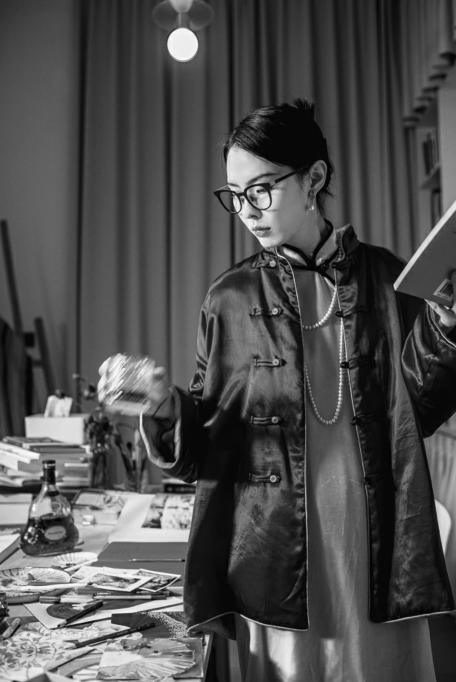

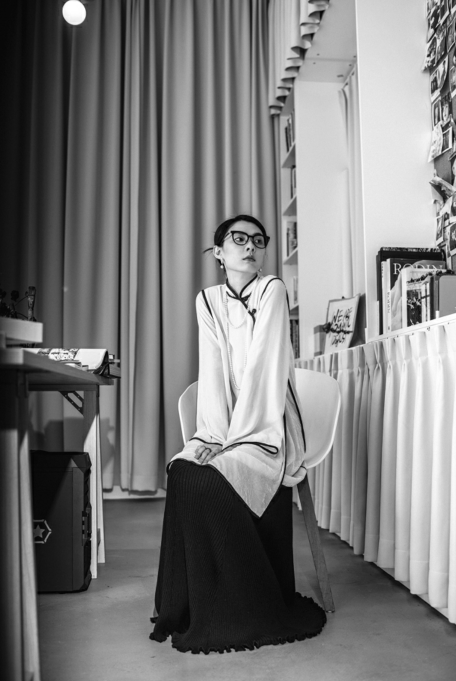
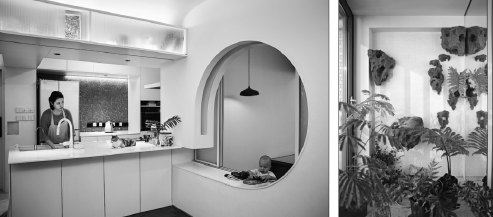
Today's Top News
- A misjudgment of situation in the first place, destabilizing AUKUS deal may bite the dust: China Daily editorial
- Welcome would be welcomed if sincere: China Daily editorial
- Xi and his wife meet Cambodian King, Queen Mother
- Xi meets Russian State Duma chairman
- Parade a tribute to Chinese people's sacrifices in WWII
- SCO will strongly uphold multilateralism
















